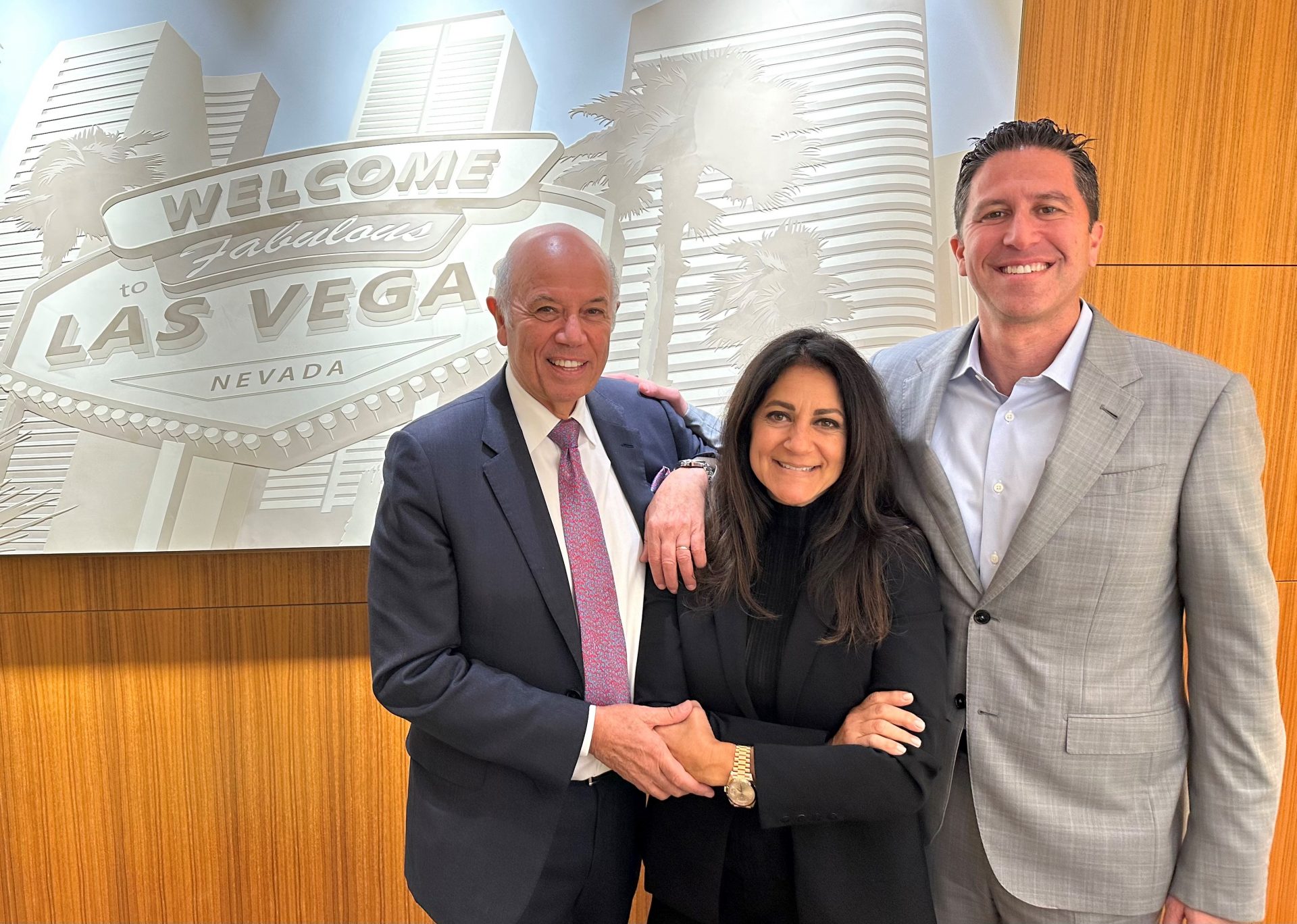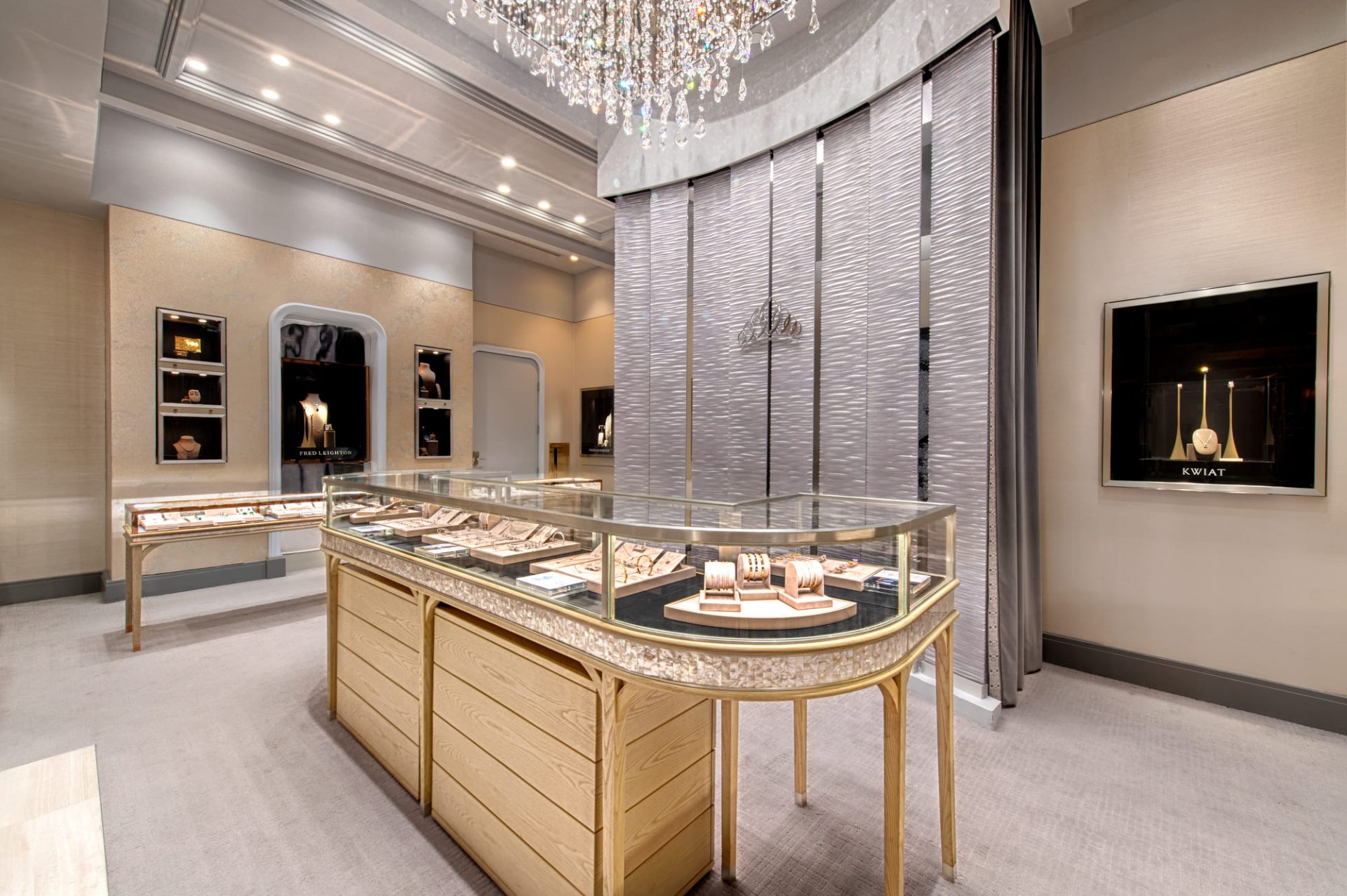LV Luxury is the holding group for many of the most spectacular jewelry and watch stores in Las Vegas, and recently added to its portfolio with branded boutiques and showrooms for Rolex, Patek Philippe, Jaeger-LeCoultre, Panerai, IWC, A. Lange & Sohne and Vacheron Constantin.
Rob Corder caught up with the architects of the Las Vegas empire, Ezra and Alan Bekhor and Christine Sidoris, to learn how they have come to dominate the Sin City watch scene, survived and then thrived throughout the pandemic turmoil, and how they see the watch business developing in the future.
WATCHPRO: How did you get started in the watch and jewelry business?
EZRA BEKHOR: It all began in the late 1970s. I was in the jewelry business, partnered with somebody who owned stores in northern California and then opened a number of stores in Las Vegas. They were typical mall stores specializing in Italian jewelry and gold chain.
It was the opening of the Venetian complex in 1999 that prompted our first venture into a combined watches and jewelry store.
We assumed that we would be able to pick and choose to work with any watch brand we wanted, but we learned very quickly that the watch business does not operate that way.
Our first watch partner was Omega and, because of that, we were able to bring in TAG Heuer, Ebel and one or two others, but that Venetian location was still primarily a jewelry store.
As we learned more about the watch industry, we recognized that offering the right brands was a great way to get people to walk in.
It is an identifiable product and well-advertised, while jewelry tends to be generic. We were encouraged to open a second store, Horologio, where we managed to bring in a few more brands and move upwards in the chain.
We focused entirely on watches and started with Breitling, Vacheron Constantin and Piaget. We approached all the brands that we would have loved to work with. Some were hesitant.
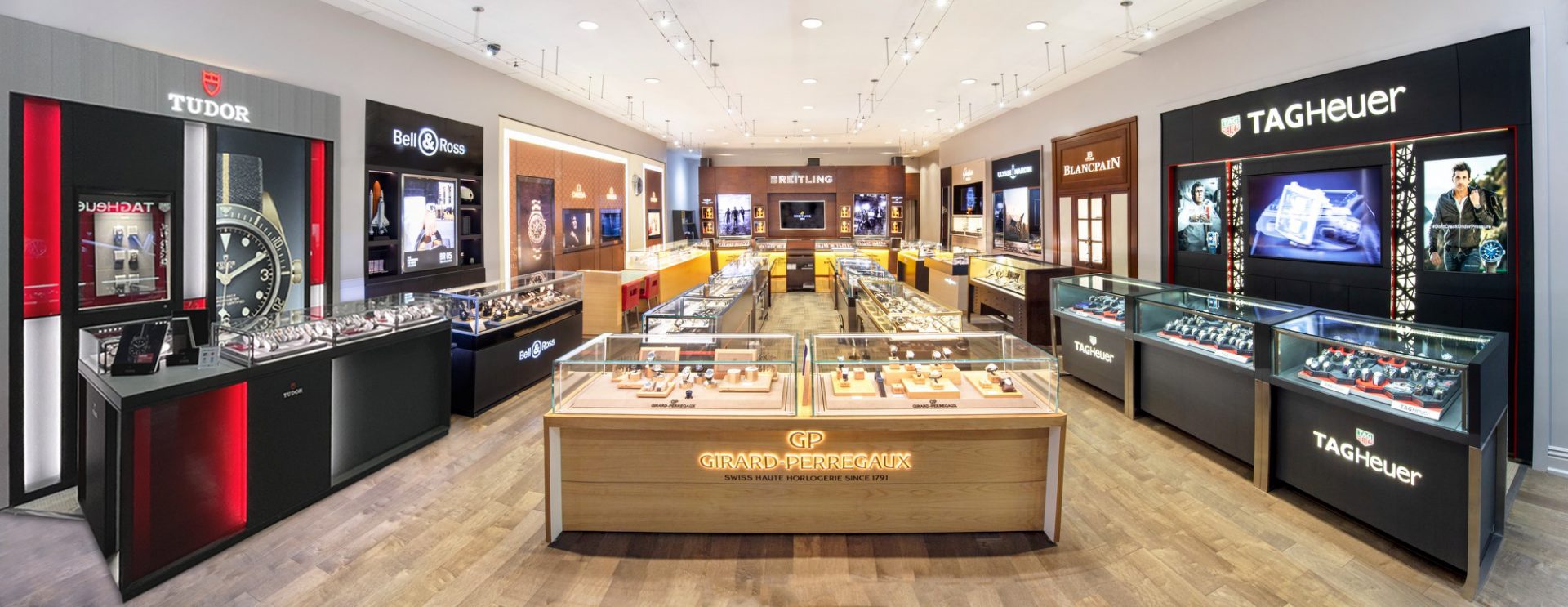
WATCHPRO: Were the brands you approached represented by several other retailers in Las Vegas at the time?
EZRA BEKHOR: Yes, but there were also at the time hotel owner-operated retailers, and they seemed to be more attractive to watch brands than some unknown start up like us.
Things changed when the Palazzo opened in 2008, and at that point Richemont felt comfortable enough to open the first IWC boutique in the US with us.
Cartier joined at the same time. Vacheron Constantin came in initially with a smaller presence in our Bellusso store in Palazzo and we also got some of the more prestigious Swatch Group brands such as Breguet and Blancpain.
Shortly thereafter, Vacheron decided it wanted a boutique and opened that with us by carving out a part of the store. For ten years or more, we had the only IWC and Vacheron boutiques in the US.
Around 2016, we decided to approach brands including Rolex and Patek Philippe again because we were able to present a location that suited them.
Our approach was to pitch a dual store with a full-fledged Rolex boutique on one side and a Patek Philippe showroom on the other in The Shops at Crystals, a prestigious mall with over 50 luxury brands and restaurants at the heart of the Las Vegas Strip.
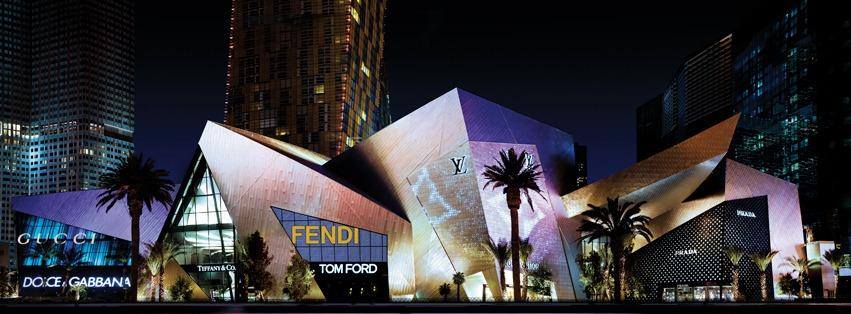
They agreed and we opened in 2018. Each store has its own entrance, its own staff, and they share a back office. These side-by-side stores became the focus of our operation at that time with Christine Sidoris relocating here to run the operation.
Christine had a history with Rolex, so she came to us with experience of how to run a Rolex boutique. She has done an amazing job and is now a partner in the company.
We set ourselves the goal, when we opened in this location, that we would become exemplary with those two brands in terms of how we handled sales, presentations and client relations. We gave ourselves the additional goal of building a customer base of Las Vegas residents, not just tourists.
WATCHPRO: Last night we were at your opening party in the Venetian for a parade of Richemont boutiques. Is that the same location as the original Bellusso?
EZRA BEKHOR: Correct. We started speaking to Richemont in 2019 about developing that into an all branded boutique concept. At that point, Richemont was just developing its SWM (Specialist Watchmaker) idea.
With covid, it took some time to formulate exactly how we were going to do it, but Vacheron took the opportunity to completely remodel its boutique while we were in lockdown and we took the time to finalize our plans with Richemont.
We ended up shutting in January 2022 and opened again on 9 June with linked branded boutiques for A. Lange & Sohne, Cartier, Jaegar-LeCoultre, IWC Schaffhausen, Panerai, and Vacheron Constantin.
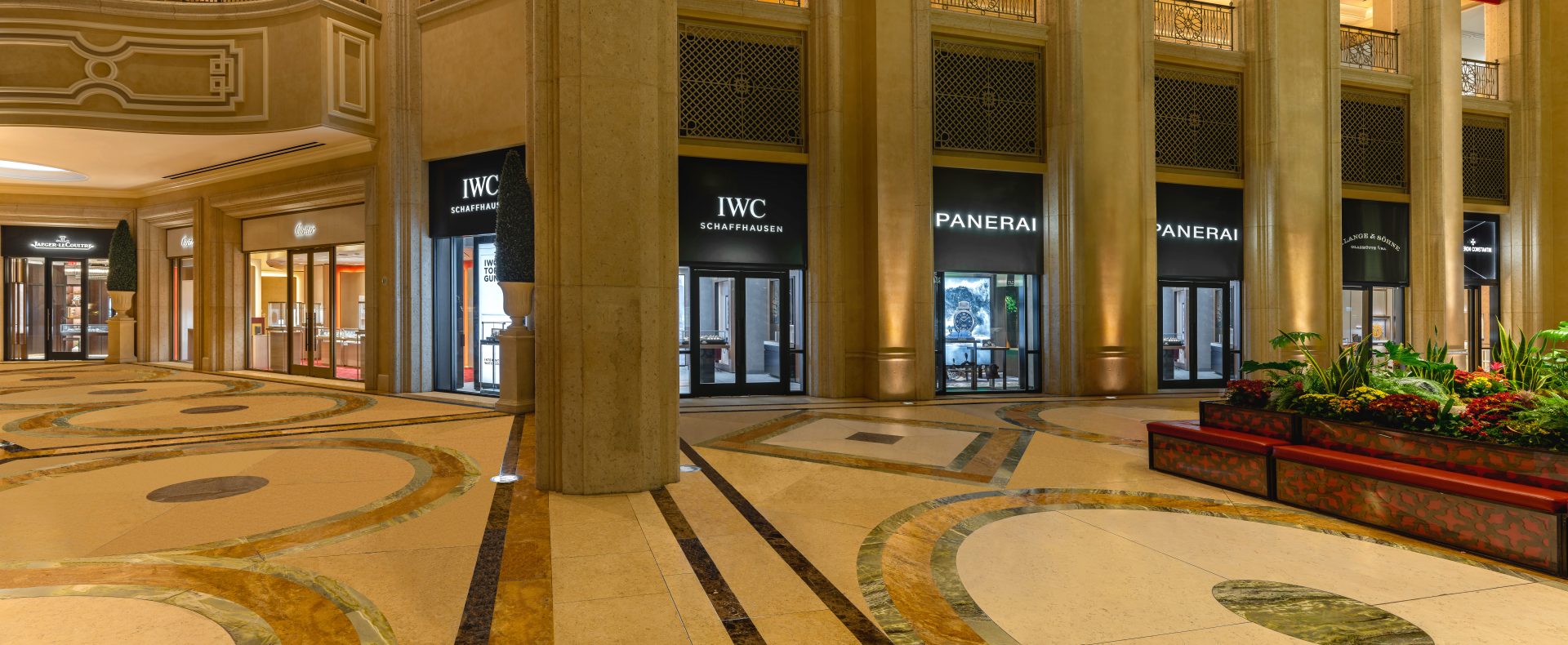
WATCHPRO: I am interested in why, along with branded boutiques, you use different names — Bellusso and Horologio — as names for multibrand watch and jewelry stores. Plus, you have LV Luxury Jewelers as the name of your parent group and your website address.
EZRA BEKHOR: Initially, we had a jewelry store at the Venetian in 1999 called Ca’ d’Oro, named after a gilded gold building in Venice, which fitted with the location. Our second store was much more watch-focused, so we worked from the Latin-based term for telling the time and named it Horologio.
In Palazzo, we combined the Italian for beauty and luxury to come up with Bellusso.
As brands became a larger part of our operation with the opening of boutiques for IWC and Vacheron, we continued to use Bellusso for the multibrand part of that location and is still the legal entity for our multibrand operation.
LV Luxury is the parent company, and we have consolidated all of our online operations under that name.
Moving forward, we intend to make LV Luxury the name that people know us by, which is why we use it for our website. Our customers find that useful because they know they are dealing with one company as they go from one of our stores to another.

WATCHPRO: It is obvious you did not stand still during the pandemic, but describe what you, the business and the city of Las Vegas went through over those two years.
CHRISTINE SIDORIS: It all happened so fast. The hotels were shut down, the casinos were closed. It was a very interesting three months.
Our team was working from home but was able to keep in touch with our existing clients. If a customer wanted to shop with us here at Rolex and Patek Philippe, we had a valet service so they could pick up watches from outside.
It was a blessing that we were not within a casino because we would not have been able to access it. The mall staff here at Crystals were very accommodating in allowing us to come in.
EZRA BEKHOR: The Venetian, Wynn and Palazzo were shut down so we were not able to even walk into the stores. We had no access to the product.
Thankfully we had always worked hard to develop customers who live in the Las Vegas area and we like to be known as the only family-run retailer on The Strip. This means we not only have great relationships in this city, but we also have great relationships with all the brands we represent.
We kept things going with Zoom presentations and even cocktail parties over Zoom. We even had brands participating; sending gifts to some of our clients.
At the beginning, it was very uncertain. We did not know how, when or if things would get back to normal. We kept as many of the staff on the payroll as we could and kept in touch with almost everybody. We had a few cases of covid early on, but thankfully nobody was seriously ill.
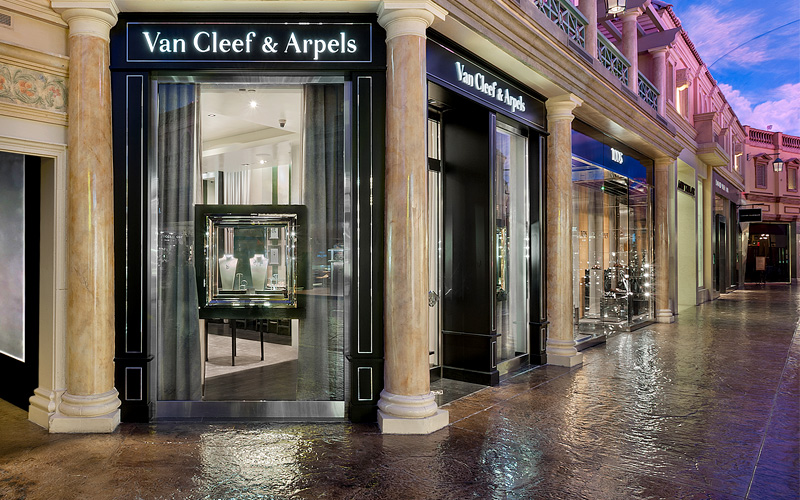
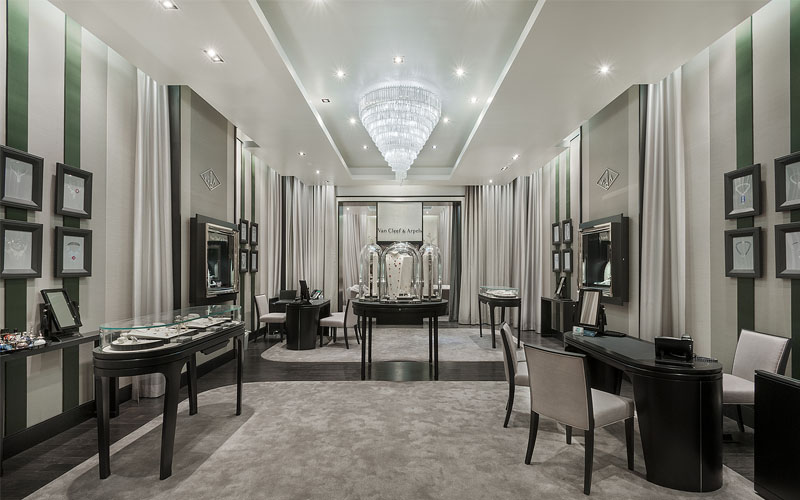
WATCHPRO: After those first few months in 2020, different states took different decisions on the pace and extent of opening up again. What was it like here in Vegas, where overseas and American visitors are so crucial?
EZRA BEKHOR: 2020 did not end up quite as well as we had been doing previously, but it was showing signs of strength returning.
CHRISTINE SIDORIS: When I think back to the reopening in June, there was huge anticipation and excitement from people wanting to come back to Vegas. Our customers wanted to come. We wanted them to come, but the city authorities needed to work out how to reopen the casinos. There were so many restrictions it was virtually impossible to operate in those months.
ALAN BEKHOR: Even with all the extra rules in place around social distancing, there was still an amazing number of people who just could not wait to come back. Initially, they could not fly, so we had people driving in from California, Utah, Arizona.
Our experience was that people were delighted to just sit down with other humans and talk about their experience. They didn’t even come in to buy, but they could not help themselves after being cooped up for so long.
Since reopening, Vegas has just got busier and busier month after month. The convention business did not restart in 2020, it partially restarted in 2021 and is still not fully back this year, which affects midweek, but the hotels are sold out at weekends now and Las Vegas feels like it is back.
WATCHPRO: Tourist spending evaporated overnight in 2020 and has been very slow to come back. Now, when visitors are returning, there is almost double the demand. Has that been your experience?
EZRA BEKHOR: It is interesting because customers living in and around Las Vegas would not typically shop here for luxury items like watches.
They would shop in Beverly Hills, New York, Paris or London. There is a small, but wealthy, community that was forced to shop locally during covid, which really helped us.
At the same time, we worked really hard to build our local client base. We sponsored golf tournaments and local charities here, so the community would see us and appreciate our support.
WATCHPRO: There must have been times when you wondered if the investment you made in these Rolex and Patek Philippe stores was wise when they were forced to close just 18 months after opening, but these two brands in particular have seen demand skyrocket since the pandemic.
EZRA BEKHOR: These two brands very quickly led the recovery for us. We quickly faced another issue because we had opened these two beautiful large stores but we could not keep inventory on display because supply could not keep up with demand.
Both Rolex and Patek Philippe were very cognizant of our big investment and were very supportive in many ways as we recovered.
WATCHPRO: The demand for Rolex is extraordinary right now. Before the pandemic, customers would have to wait for a few hot models like the Daytona, Pepsi, Batman, etc. But now you cannot even walk in and buy a 28mm Datejust.
CHRISTINE SIDORIS: You are right the shortages affect the entire catalog now. I think it is healthy that demand is not concentrated on just a few professional steel models.
Demand has spread to precious metals and every collection. Customers have come to appreciate there is more to Rolex than just steel sports watches and that is healthy for the brand.
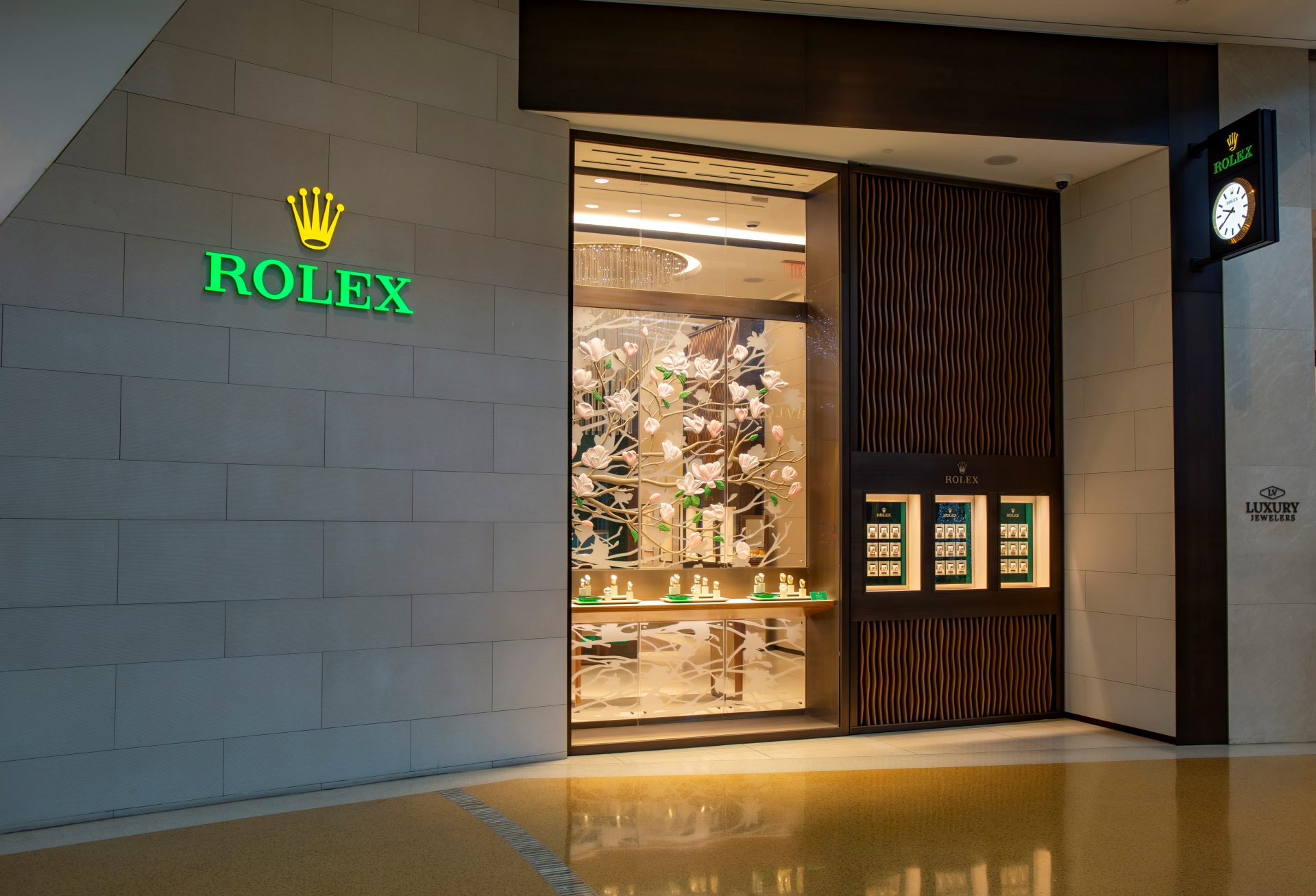
WATCHPRO: How sophisticated was your customer relationship management before the pandemic. Did you know everybody’s purchasing history, birthdays, anniversaries, etc, so you could reach out when they could not come into stores and start a conversation?
CHRISTINE SIDORIS: We implemented a CRM system in 2014 and have always been very client relationship-driven. It is so important to our success.
WATCHPRO: I was speaking to Lisa Bridge, CEO of Ben Bridge, yesterday. She made the point that she is serving so many more watch collectors now than she did a few years ago as the category has become so hot. This means opportunities to sell more watches to the same collectors, rather than concentrating on the next customer who may walk through the door.
CHRISTINE SIDORIS: As the luxury timepiece clientele has expanded, we have welcomed many new clients to our company. It’s important to grow our network of clients and to offer the experience of owning a luxury timepiece beyond the avid collector.
Our CRM system gives us alerts when clients have special occasions coming up. A lot of retailers are late to the game when it comes to developing relationships with clients.
For us, it has never been about just transactions. I know that for me, Ezra, Alan and the whole team, we get the greatest satisfaction from building these long-term relationships and being a part of their special occasions.
When there are challenges, we have clients that are not going to leave us for anybody else. We are very proud of that.
The team we have here is young and most have not worked in retail before. We have been able to train them to clientele to a different level by sharing our experience with them.
We had clients recently who were celebrating their 50th wedding anniversary. He bought her a special piece of jewelry and she bought him a beautiful watch. We made it a very special experience for them both and hopefully one they will never forget. These are the sort of stories that we share throughout our team to inspire each other.
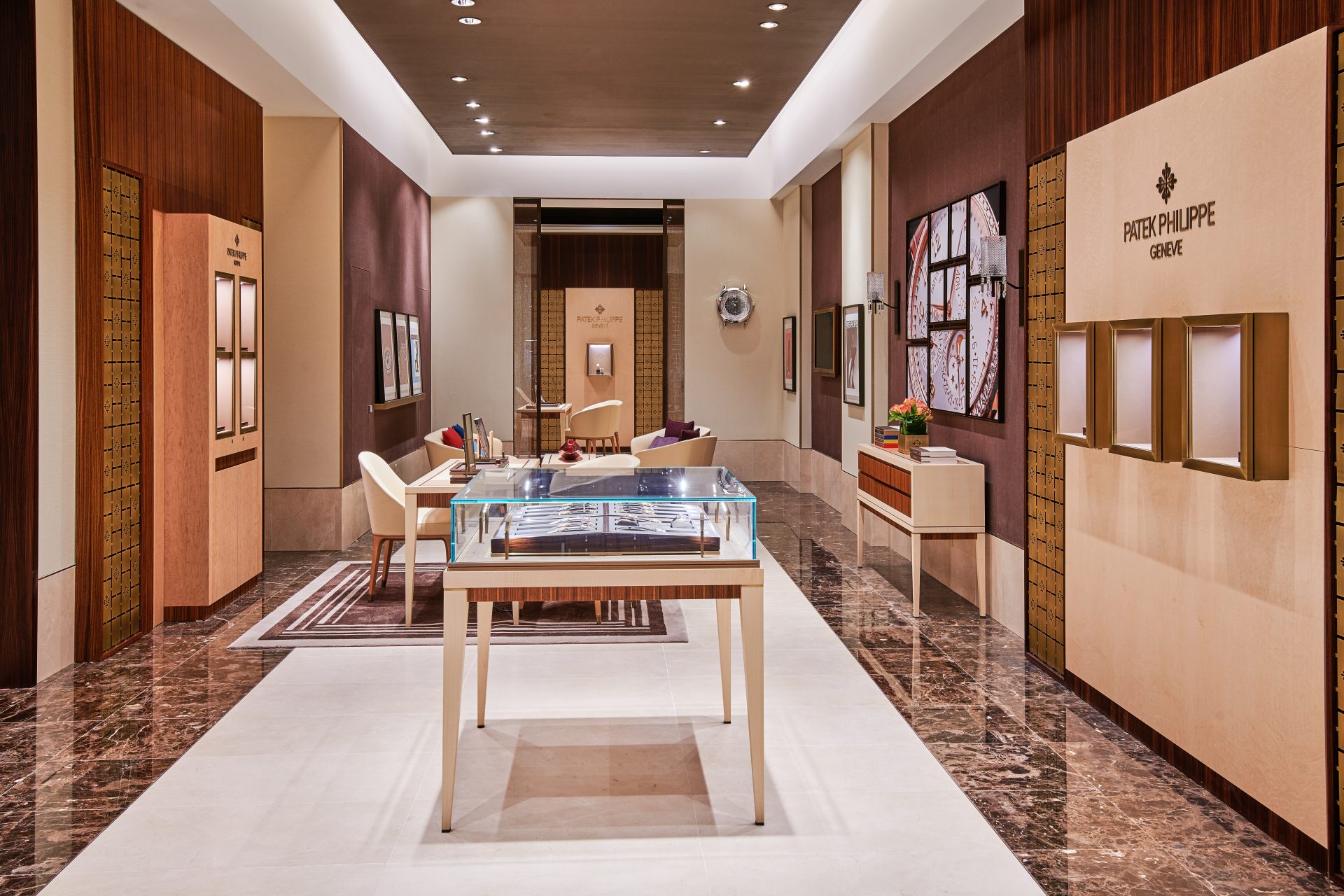
WATCHPRO: Clienteling was so crucial in 2020 as retailers pivoted from drawing people into their stores towards reaching out to them in their homes. Now retailers have both footfall returning and those clienteling skills to draw on, plus many have developed their domestic client bases. Was that part of the reason that 2021 was strong like no other year here and in the rest of the United States?
CHRISTINE SIDORIS: It was an incredible year for us. Every brand was coming back and every store was seeing extraordinary performance.
Managing the volume of inquiries was a challenge and we had to be strict about telling our clients they had to come into the store to see us and collect their watches in person.
Often that would mean them flying into Las Vegas specially to see us. Every transaction was here in the Rolex Boutique or Patek Philippe store.
We and the brands believe so strongly in meeting our clients so that we can build relationships and make sure they know who we are to them.
WATCHPRO: How do you manage your client’s expectations for brands like Rolex and Patek Philippe where demand exceeds supply by such a margin?
EZRA BEKHOR: Shortages are carrying through beyond Rolex and Patek Philippe into other brands.
Our aim is to make sure our customers coming to Las Vegas are offered more choice. People coming here are dazzled by Las Vegas.
They can see Paris, New York, Venice, waterfalls, volcanoes — it is all here — so we have to be bigger than life in our presentation as well.
You see that throughout our company locations, which make a huge impression on clients when they come in. It feels bigger and stronger than they might see in their home states.
That is what we are also aiming for in our Palazzo stores. We want consumers to see watches in a boutique environment for all the brands we have there.
They can see boutique-only limited editions from every brand, plus they can walk from one boutique to the next and experience watches from across the Richemont maisons.
Although all the boutiques are connected, they feel very different and present the watches in a fully branded environment.
It is a unique place to shop because customers would not see the limited editions we are able to offer in multibrand stores. They would have to go trawl around from one boutique to another in a place like New York to see the same watches.
WATCHPRO: Watch collectors used to be a fairly specialist community, but now it has become normal for people to own several timepieces and to develop their interest into a life-long hobby that draws them into learning more about watchmaking and taking an interest in brands beyond the usual Rolex, Omega, Patek. Are you seeing more collectors, and are those collectors buying more watches and rarer watches?
CHRISTINE SIDORIS: There were always collectors, but what we have seen is an insurgence of a younger collector expanding into many of the main brands that we offer.
Longstanding collectors are having to compete with these new guys, but they are not necessarily interested in the same watches. True collectors are interested in the history, the mechanics, the artistry of watches.
ALAN BEKHOR: A lot of people are realizing that watch collecting is a wonderful hobby. You can look at the watches every day and admire them. They make a statement about who you are. People get to wear different watches for different occasions.
More people are becoming millionaires than ever before every year, and many of them discover the joy of watch collecting when they are able to afford it.
I think I read that there are six million new millionaires in the world every year, but the Swiss watchmaking industry is making fewer watches today than it did five years’ ago.
How are you going to satisfy all those new millionaires who might get into watches and watch collecting?
These new millionaires are on top of the people who were already wealthy, and appear to have been getting even wealthier. That is a lot of people who are all chasing the same luxury watches.
WATCHPRO: Are collectors getting younger? I have a theory that millennials or younger may have caught the collecting bug with trading cards, then sneakers; they may have got into crypto and made good money, and the next move might be into watches.
CHRISTINE SIDORIS: The music industry has been a huge influence on the sort of people you are describing. They see artists wearing and talking about Rolex, Patek Philippe, Richard Mille and Audemars Piguet on social media and in their lyrics.
That is driving younger people into the watchmaking world. You would be amazed at the younger people coming in and paying $90,000 for a perpetual calendar these days.
People in their 40s and 50s are still buying watches, but we are seeing a huge rise in the number of people in their 20s and 30s shopping for high value watches with us as well.
EZRA BEKHOR: Everything we are talking about is part of a growing client base, and that puts pressure on supplies.
WATCHPRO: We are speaking in the summer of 2022, and there are signs of a weakening economy as inflation eats into peoples’ incomes. Are you seeing any signs of trouble on the horizon this year?
EZRA BEKHOR: I tell our leadership team that we cannot base our future on the way the market is today. We need to think about what happens if the market cools.
I do not expect this to happen overnight, but I want the team to think about a day when cabinets are full of product again, and how we will entice clients to keep shopping with us.
Although we currently have more demand than supply, we need to be conscious that we are located in Las Vegas, and we need to be larger than life to keep attracting walk-in customers.
We need to ensure that we are prepared for a future when the market may return to a more normal situation, and that is why we took the decision to get into boutiques, which allows us to better represent and showcase the breadth of the brands environment and collections.
WATCHPRO: How do you think the rest of this year and 2023 will be in business terms?
EZRA BEKHOR: We often think about the reasons behind the very strong rebound of the last two years, and we have discussed those.
But inflation makes people less confident and some look to move their money into safe havens such as gold.
Today they look at watches as an alternative, and they come with the added value of being beautiful to look at and enjoy.
Consumers are confident that the value in watches will endure.
WATCHPRO: How do you see the primary and secondary market intersecting and influencing each other?
EZRA BEKHOR: It used to be that people would expect to find watches at a discount on the grey or secondary market. Now it is the complete opposite.
You could measure the desirability of brands based on how much of a discount they were selling for on the secondary, but today that never comes up.
Consumers know the prices of watches on the secondary market and if they are fortunate enough to be able to buy hot watches at retail, they grab them.
WATCHPRO: It seems to me that, since covid restrictions were lifted, we have been flying along with nothing but tailwinds. But as we sit today, that wind is changing direction. The question is whether the luxury watch industry has so much momentum and underlying strength that it will not be buffeted by these headwinds?
EZRA BEKHOR: Every recession is different, and I do not think consumers, retailers and the brand have been through a situation like this before.
We are going to see a much more cautious approach by brands to adjusting supply if demand falls away. I do not think we will see markets flooded with product.
We will know we have reached the end of the current boom when every retailer has showcases full of watches again.
It definitely won’t happen overnight, as the times are still good, as evidenced by the healthy turnover of our inventory across our brands.
But I would like brands to be cautious about how they increase supply, because it could be very painful if they get it wrong and push out too much product.
Brands that are less in demand needs to be the most careful or we will get back into the cycle of oversupply, more product on the grey market and discounting that will damage demand even more.
We are getting the impression that, having invested in internal boutiques, the brands are much more careful about how they manage supply.
WATCHPRO: It would be nice to think that the industry will not fall into the trap of overproduction leading to the cycle you describe, but many of the brands with weaker demand are owned by publicly traded companies whose shareholders want to see sales rising every quarter. That can lead to the sort of short-termism that you are cautioning against.
EZRA BEKHOR: You are right. I remember 2014 was the last year of a boom driven by rising Chinese demand and there was virtually no discounting in the market.
By 2015/16, after Chinese demand dropped, brands were discounting, even in their own boutiques. I told them it was a slippery slope and very hard to climb back up.
This time around, we are told by the brands that they are very aware of the risks of getting into the same situation as demand adjusts to a more normal level.
WATCHPRO: Another topic I would love your views on is how brands look at family-owned businesses like yours and consider what will happen when the founder and owner retires. Was it an important factor in your discussions with Richemont, Rolex and Patek Philippe that your son Alan is in the business and you have a succession plan in place?
EZRA BEKHOR: Absolutely. That was very important. Seeing who Alan is and how he is physically contributing to the operation was very helpful in those discussions. They are not looking for partners that will just work with them for five years and then move on.
WATCHPRO: And finally, what is next for you, Christine, Alan and the business?
EZRA BEKHOR: We are always looking to add a store or two, but not at a crazy pace. We are at a crossroads right now.
We are handling the network of stores between the three of us, but we have added people in anticipation that we need to have the right people and the right experience to handle a larger number of locations in the future while maintaining the quality of what we do and the family nature of our business.

